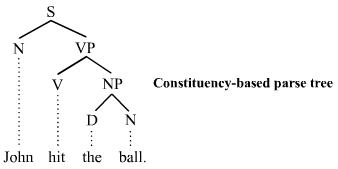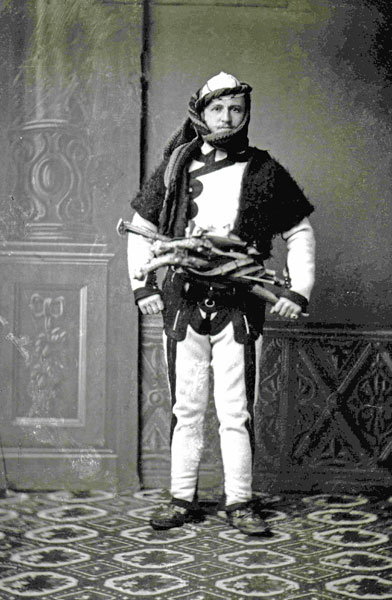|
Mahir Domi
Mahir Domi (1915–2000) was an Albanian linguist, professor, and academic. He was one of the organizers and main participants of the Albanian Orthography Congress, and member of the follow-up commission responsible for deploying the orthographic rules of the Standard Albanian language. Biography Domi was born in Elbasan, Albania on 12 March,1915. He started his high school studies in the Norman School there, and finished them in the French Lyceum of Korçë in 1937. After that he registered in the University of Grenoble in France, from where he graduated in classic philology in 1941. The same year he started teaching at the Normal School of Elbasan, and later he became its director. From 1947, he started working in the Institute of Sciences (an early precursor of the Albanian Academy of Sciences) and lecturer at the High Pedagogical Institute in Tirana. Domi participated as co-editor in the ''Albanian language dictionary'' () in 1954. With the establishment of the Univer ... [...More Info...] [...Related Items...] OR: [Wikipedia] [Google] [Baidu] |
Mahir Domi 2015 Stamp Of Albania
Mahir (also spelled Maher or "Mihir-A", ) is an Arabic given name meaning "skilled" or "expert". Notable people with the name include: Given name Maher *Maher Arar (born 1970), Canadian software engineer *Maher al-Assad (born 1967), brother of former Syrian President Bashar al-Assad and former head of the Presidential Guard *Maher Sabry (born 1967), Egyptian filmmaker, writer and gay rights activist *Maher Al Sayed (born 1979), Syrian football player *Maher-shalal-hash-baz, son of Biblical prophet Isaiah *Maher Shalal Hash Baz (band), Maher Shalal Hash Baz, artistic alter ego of Tori Kudo, a Japanese naivist composer and musician *Maher Charif, Palestinian historian and lecturer at the Institut français du Proche-Orient in Syria Mahir First name * Mahir Agva (born 1996), German basketball player * Mahir Çayan (1946–1972), Turkish communist leader * Mahir Çağrı (born 1962), Turkish Internet celebrity * Mahir Halili (born 1975), Albanian footballer * Mahir Jasem (born 1989), ... [...More Info...] [...Related Items...] OR: [Wikipedia] [Google] [Baidu] |
Grammar
In linguistics, grammar is the set of rules for how a natural language is structured, as demonstrated by its speakers or writers. Grammar rules may concern the use of clauses, phrases, and words. The term may also refer to the study of such rules, a subject that includes phonology, morphology (linguistics), morphology, and syntax, together with phonetics, semantics, and pragmatics. There are, broadly speaking, two different ways to study grammar: traditional grammar and #Theoretical frameworks, theoretical grammar. Fluency in a particular language variety involves a speaker internalizing these rules, many or most of which are language acquisition, acquired by observing other speakers, as opposed to intentional study or language teaching, instruction. Much of this internalization occurs during early childhood; learning a language later in life usually involves more direct instruction. The term ''grammar'' can also describe the linguistic behaviour of groups of speakers and writer ... [...More Info...] [...Related Items...] OR: [Wikipedia] [Google] [Baidu] |
Androkli Kostallari
Androkli Kostallari (1922–1992) was an Albanian linguist and scholar. He was one of the central figures of the Albanian language studies and founding member and director of the Albanian Institute of History and Linguistics, and later Institute of Linguistics and Literature (Alb: ''Instituti i Gjuhësisë dhe Letërsisë''). Kostallari is remembered for being one of the key expert contributor to the present Albanian language orthography established by the Congress of Orthography of 1972. Life and work Kostallari was born in Leusë near Përmet. He pursued his high school studies in Shkodër and later in Tiranë. An active participant of the National Liberation Movement during World War II, he worked in the post-war press-organs where he succeeded in management positions though at a young age. He studied philology in the Lomonosov Moscow State University, where he studied Russian language and literature profiling in journalism, and graduating in 1954. Upon his return in Albania ... [...More Info...] [...Related Items...] OR: [Wikipedia] [Google] [Baidu] |
Shaban Demiraj
Shaban Demiraj (1 January 1920 – 30 August 2014) was an Albanian albanologist, linguist, professor at the University of Tirana from 1972–1990, and chairman of the Academy of Sciences of Albania during the period of 1993–1997. Life Demiraj was born on 1 January 1920 in Vlorë. Despite financial difficulties and the lack of academic institutions in Albania, he managed to study and learn Latin, ancient Greek, and the major European languages. After completing his studies at the Madrasa of Tirana in 1939, he studied Albanian language in the two-year curriculum Pedagogical Institute, branch of Albanian language and literature (1946–1948), and later in the High Pedagogical Institute (1954–1955). From 1948 to 1954, Demiraj worked as language and literature teacher in various high schools in Gjirokastër and Tirana. In 1954, he started working as a lector in the same High Pedagogical Institute from where he graduated, and later in the University of Tirana (UT), holding t ... [...More Info...] [...Related Items...] OR: [Wikipedia] [Google] [Baidu] |
Arabic Alphabet
The Arabic alphabet, or the Arabic abjad, is the Arabic script as specifically codified for writing the Arabic language. It is a unicase, unicameral script written from right-to-left in a cursive style, and includes 28 letters, of which most have contextual letterforms. Unlike the modern Latin alphabet, the script has no concept of letter case. The Arabic alphabet is an abjad, with only consonants required to be written (though the long vowels – ''ā ī ū'' – are also written, with letters used for consonants); due to its optional use of diacritics to notate vowels, it is considered an impure abjad. Letters The basic Arabic alphabet contains 28 letter (alphabet), letters. Forms using the Arabic script to write other languages added and removed letters: for example ⟨پ⟩ is often used to represent in adaptations of the Arabic script. Unlike Archaic Greek alphabets, Greek-derived alphabets, Arabic has no distinct letter case, upper and lower case letterforms. Many le ... [...More Info...] [...Related Items...] OR: [Wikipedia] [Google] [Baidu] |
Albanian Literature
Albanian literature stretches back to the Middle Ages and comprises those literary texts and works written in Albanian language, Albanian. It may also refer to literature written by Albanians in Albania, Kosovo and the Albanian diaspora particularly in Arbëreshë people, Italy. Albanian occupies an Isolated language, independent branch within the Indo-European languages, Indo-European family and does not have any other closely related language. The origin of Albanian is not entirely known, but it may be a successor of the ancient Illyrian languages, Illyrian language. The Archbishop of Antivari Guillaume Adam wrote a report in 1332 in which he said that Albanians used Latin letters in their books although their language was quite different from the Latin language. The oldest surviving documents written in Albanian are the "Formula e pagëzimit" (Baptismal formula) recorded by Pal Engjëlli, Bishop of Durrës in 1462 in the Gheg Albanian, Gheg dialect, and some New Testament ver ... [...More Info...] [...Related Items...] OR: [Wikipedia] [Google] [Baidu] |
Romanian Language
Romanian (obsolete spelling: Roumanian; , or , ) is the official and main language of Romania and Moldova. Romanian is part of the Eastern Romance languages, Eastern Romance sub-branch of Romance languages, a linguistic group that evolved from several dialects of Vulgar Latin which separated from the Italo-Western languages, Western Romance languages in the course of the period from the 5th to the 8th centuries. To distinguish it within the Eastern Romance languages, in comparative linguistics it is called ''#Dialects, Daco-Romanian'' as opposed to its closest relatives, Aromanian language, Aromanian, Megleno-Romanian language, Megleno-Romanian, and Istro-Romanian language, Istro-Romanian. It is also spoken as a minority language by stable communities in the countries surrounding Romania (Romanians in Bulgaria, Bulgaria, Romanians in Hungary, Hungary, Romanians in Serbia, Serbia and Romanians in Ukraine, Ukraine), and by the large Romanian diaspora. In total, it is spoken by 2 ... [...More Info...] [...Related Items...] OR: [Wikipedia] [Google] [Baidu] |
Chief Editor
An editor-in-chief (EIC), also known as lead editor or chief editor, is a publication's Editing, editorial leader who has final responsibility for its operations and policies. The editor-in-chief heads all departments of the organization and is held accountable for delegating tasks to staff members and managing them. The term is often used at newspapers, magazines, yearbooks, and television news programs. The editor-in-chief is commonly the link between the publisher or proprietor and the editorial staff. Responsibilities Typical responsibilities of editors-in-chief include: * Ensuring that content is journalistic objectivity, journalistically objective * Fact-checking, spelling, grammar, writing style, page design and photos * Rejecting writing that appears to be plagiarized, ghostwriter, ghostwritten, published elsewhere, or of little interest to readers * Evaluating and editing content * Contributing editorial pieces * Motivating and developing editorial staff * Ensuring the fin ... [...More Info...] [...Related Items...] OR: [Wikipedia] [Google] [Baidu] |
Presidium
A presidium or praesidium is a council of executive officers in some countries' political assemblies that collectively administers its business, either alongside an individual president or in place of one. The term is also sometimes used for the governing body of European non-state organisations. Communist usage In Communist states the presidium is the permanent committee of the legislative body. The Presidium of the Supreme Soviet existed after 1936, when the Supreme Soviet of the USSR supplanted the Congress of Soviets of the USSR, as a replacement for the Central Executive Committee which was headed by "the Presidium of the Central Executive Committee". In its place was the Presidium of the Supreme Soviet alone, no Central Executive Committee, and from 1938 to 1989, the Chairman of the Presidium of the Supreme Soviet was the formal title of the head of state of the USSR until the office of Chairman of the Supreme Soviet was introduced in 1989, later to be replaced by the ... [...More Info...] [...Related Items...] OR: [Wikipedia] [Google] [Baidu] |
Albanology
Albanology, also known as Albanian studies, is an interdisciplinary branch of the humanities that addresses the language, costume, literature, art, culture and history of Albanians. Within the studies the scientific methods of literature, linguistics, archeology, history and culture are used. However the Albanian language is the main point of research of the studies. Studies Johann Erich Thunmann in the 18th century was probably the first Albanologist. He supported the theory of the autochthony of the Albanians and also presented the Illyrian origin theory. Later on Gustav Meyer proved that the Albanian language was part of the Indo-European family. In the 20th century such studies were deepened by Norbert Jokl, Milan Šufflay, and Franz Nopcsa von Felső-Szilvás, as well as Karl Reinhold, and Eqrem Çabej. The studies of Albanology were more institutionally supported in Albania starting in 1940 with the opening of the Royal Institute of the Albanian Studies, which had ... [...More Info...] [...Related Items...] OR: [Wikipedia] [Google] [Baidu] |
Morphology (linguistics)
In linguistics, morphology is the study of words, including the principles by which they are formed, and how they relate to one another within a language. Most approaches to morphology investigate the structure of words in terms of morphemes, which are the smallest units in a language with some independent meaning. Morphemes include roots that can exist as words by themselves, but also categories such as affixes that can only appear as part of a larger word. For example, in English the root ''catch'' and the suffix ''-ing'' are both morphemes; ''catch'' may appear as its own word, or it may be combined with ''-ing'' to form the new word ''catching''. Morphology also analyzes how words behave as parts of speech, and how they may be inflected to express grammatical categories including number, tense, and aspect. Concepts such as productivity are concerned with how speakers create words in specific contexts, which evolves over the history of a language. The basic fields of ling ... [...More Info...] [...Related Items...] OR: [Wikipedia] [Google] [Baidu] |






